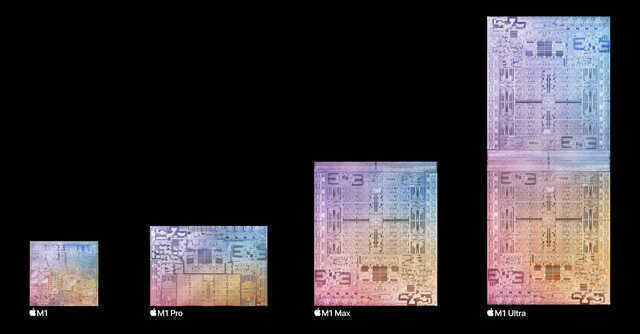
Apple’s M1 Ultra chip uses chiplet architecture to make Mac PCs faster


When Apple had launched the M1 Max chip in October 2021, it didn’t talk about one of its cool features-- an interconnect bus that could be used to stack multiple dies to create a larger and more powerful processor. Now Apple is leveraging that very feature in its new M1 Ultra chip that was launched yesterday at the March 8 Spring event. The M1 Ultra chip will be used in the Apple Mac Studio PC, which will start at $3,999.
For an Apple desktop user, this is a huge boost as the M1 Ultra is considerably faster than the M1 Max chips. Apple claims the M1 Ultra has 114 billion transistors, which is more than seen on any personal computer chip yet. In terms of CPU and GPU cores, the M1 Ultra offers a 20-core CPU and 64-core GPU, which is twice of the M1 Max’s 10-core CPU and 32-core GPU.
Apple claims the new M1 Ultra can muster 90% higher multi-threaded performance as compared to the fastest available 16-core desktop chip while using 100W less power. Similarly, it can render a 3D image and complex image processing faster than even the highest-end PC GPU, while using 200W lesser power. Also, the M1 Ultra offers a higher memory capacity of 128GB, which is 10x more than the latest desktop chip.

When Apple had switched to its own ARM-based Silicon and launched the M1 chip that went on to power the MacBook Pro and Mac PCs, the company received a lot of flak for its underwhelming performance as compared to Intel’s desktop-class CPUs. Apple addressed that to some extent with the M1 Max chip last year. The M1 Ultra is what puts Apple’s PCs on par with Windows PCs powered by Intel and AMD chips.
Fusing multiple dies to form a more powerful chip is not a new concept. It's also referred to as chiplet architecture and is already being used by AMD in its EPYC server processor.
Intel too is said to be working on its chiplet-based Meteor Lake CPU, which will be based on 4nm architecture and will have a compute die, SOC-LP die, and a GPU die. It is expected to launch next year.

Apple said its interconnect technology, called UltraFusion architecture, can allow 2.5TB/s of total bandwidth between the two connected chips, allowing seamless communication between two dies.
Chiplet-based architecture is gaining a lot of traction among chipmakers and OEMs. Last week, some of them including Intel, Apple, ARM, Samsung and Google joined forces to create an industry consortium that will promote an open standard called Universal Chiplet Interconnect Express (UCIe) to drive wider adoption of chiplets.
Unlike a traditional chip in which a die is designed as a single monolithic piece, chiplets are modular and made of multiple smaller dies that together create a single CPU package.

Squeezing the size of the transistor is becoming a challenge due to the limitations of silicon. Dividing silicon wafers into smaller chiplets can boost performance, reduce cost and minimize wastage in case of defects.
